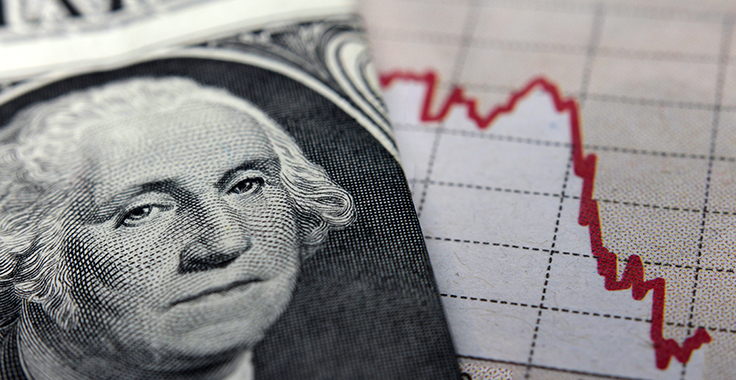Redefining ‘recession’ and the case that it’s already over
Was the United States technically in a recession the last few months? And is the recession already over?
Richard Branch, the chief economist at Dodge Data & Analytics, says yes to both, pointing to the National Bureau of Economic Research (NBER) as an authority on the matter.
“A few weeks ago, they announced that the economy had actually entered [into] recession in [March],” says Branch, referring to an NBER Business Cycle Dating Committee report from June 8. “The common textbook definition of a recession is negative real GDP growth spread over two quarters. In actuality, the definition is much more nuanced than that – much broader – including broad changes in the employment level.”
The committee’s rationale
The NBER committee determined that a peak in U.S. economic activity occurred in February of this year, marking the nation’s longest economic expansion since 1854. Additionally, the committee says quarterly economic activity peaked in the fourth quarter of 2019.

According to the National Bureau of Economic Research’s Business Cycle Dating Committee, a recession began in March of this year. Photo: claffra/iStock / Getty Images Plus/Getty Images
Still, with economic growth taking place in the second quarter this year, the textbook definition of a recession cannot apply to 2020. So now, the NBER committee is defining a recession as “a significant decline in economic activity spread across the economy, normally visible in production, employment and other indicators.”
A recession begins when the economy reaches a peak of economic activity and ends when the economy reaches its trough, the committee adds.
“Between the trough and the peak, the economy is in an expansion,” the committee writes.
The NBER committee recognizes the fact that the usual definition of a recession differs from what it put forth in its June report. But the committee determined that a recession nevertheless began in March after evaluating the depth of the economic contractions, the length of the downturn and whether economic activity declined broadly across the economy.
“The committee recognizes that the pandemic and the public health response have resulted in a downturn with different characteristics and dynamics than prior recessions,” the committee writes. “Nonetheless, it concluded that the unprecedented magnitude of the decline in employment and production, and its broad reach across the entire economy, warrants the designation of this episode as a recession, even if it turns out to be briefer than earlier contractions.”
Once more time passes, Branch believes the NBER committee will look back and say the recession that began in February of this year ended in May, when tremendous gains in employment were made.
“As we look at the recession in terms of timing, this will be one of the shortest and actually one of the most severe recessions that we’ve seen in U.S. history,” Branch says.
Shifting to recovery
So if the recession supposedly ended in May, then the United States is technically already in recovery mode. But what the nation’s full recovery look likes remains a mystery.
“In May and June we added back 7.5 million jobs,” says Branch, adding that 22 million jobs were wiped out in March and April. “That’s certainly a great step forward. But in our head, the thought of recovering that remaining 15 million jobs in short order – enough to give us a true V-shaped recovery – [is] not an idea or theory that we subscribe to.”
Branch believes the United States is in for a long and slow recovery, and that the shape of the recovery curve – if it is indeed a curve – could vary.
“I’ve heard people describe [the curve] as a Nike swoosh, that there will be an initial kickup and then it will start to flatten out. Of course, that recovery could be severely upended by the growing number of virus cases in states like Texas, California, Florida and other states – especially if we start to see a further shuddering of businesses in a more Draconian lockdown than we’ve seen to date. That certainly puts at risk the recovery.”










